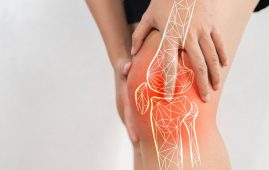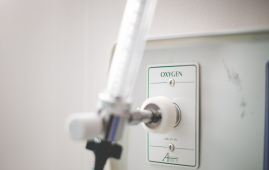

During their training, surgeons frequently require the supervision of more experienced doctors who may mentor them on their technique. This may be changing as a result of a new artificial intelligence system developed by Caltech researchers and Keck Medicine of USC urologists that intends to provide surgeons with vital feedback on the quality of their job.
The new Surgical AI System (SAIS) aims to deliver objective performance ratings to surgeons in order to improve their profession and, by extension, the results of their patients. When given a video of a surgical procedure, SAIS can determine the sort of surgery being performed as well as the quality with which it was carried out by a surgeon.
“In high stakes environments such as robotic surgery, it is not realistic for AI to replace human surgeons in the short term,” says Anima Anandkumar, Bren Professor of Computing and Mathematical Sciences and senior author of the studies. “Instead, we asked how AI can safely improve surgical outcomes for the patients, and hence, our focus on making human surgeons better and more effective through AI.”
SAIS was trained on a vast amount of surgery video material that had been annotated by medical personnel. Individual distinct motions, such as grasping a needle, driving it through tissue, and withdrawing it from tissue, were used to evaluate surgeons’ performance. SAIS was charged after training with examining and rating surgeons’ performance during a wide range of procedures utilizing footage from several facilities.
“SAIS has the potential to provide surgeon feedback that is accurate, consistent, and scalable,” says Dani Kiyasseh, lead author of the studies, a former postdoctoral researcher at Caltech and now a senior AI engineer at Vicarious Surgical. The hope, according to the researchers, is for SAIS to provide surgeons with guidance on what skill sets need to be improved.
The team improved the AI’s capacity to justify its skill assessments to make the tool more valuable to surgeons. By referring to specific video clips, the AI can now advise surgeons about their degree of ability and provide extensive comments on its reasoning for making that evaluation.
“We were able to show that such AI-based explanations often align with explanations that surgeons would have otherwise provided,” Kiyasseh says. “Reliable AI-based explanations can pave the way for providing feedback when peer surgeons are not immediately available.”
Early on, SAIS researchers discovered an unintentional bias in the system, in which the AI assessed surgeons as more or less adept than their expertise would otherwise imply based purely on a study of their general movements. To solve this issue, the researchers instructed the AI system to only focus on relevant portions of the surgical video. Narrowing the emphasis reduced, but did not eradicate, the bias, which the researchers are still working on.
“Human-derived surgical feedback is not presently objective nor scalable,” says Andrew Hung, a urologist with Keck Medicine of USC and associate professor of urology at Keck School of Medicine of USC. “AI-derived feedback, such as what our system delivers, presents a major opportunity to provide surgeons actionable feedback.”
more recommended stories
 New Blood Cancer Model Unveils Drug Resistance
New Blood Cancer Model Unveils Drug ResistanceNew Lab Model Reveals Gene Mutation.
 Osteoarthritis Genetics Study Uncovers New Treatment Hope
Osteoarthritis Genetics Study Uncovers New Treatment HopeOsteoarthritis- the world’s leading cause of.
 Antibody Breakthrough in Whooping Cough Vaccine
Antibody Breakthrough in Whooping Cough VaccineWhooping cough vaccine development is entering.
 Scientists Unveil Next-Gen Eye-Tracking with Unmatched Precision
Scientists Unveil Next-Gen Eye-Tracking with Unmatched PrecisionEye-tracking technology has long been a.
 Men5CV: Hope for Ending Africa’s Meningitis Epidemics
Men5CV: Hope for Ending Africa’s Meningitis EpidemicsA landmark global health study led.
 Stem Cell Therapy Shows 92% Success in Corneal Repair
Stem Cell Therapy Shows 92% Success in Corneal RepairA groundbreaking stem cell therapy known.
 Gene Therapy for Maple Syrup Urine Disease
Gene Therapy for Maple Syrup Urine DiseaseResearchers at UMass Chan Medical School.
 How Fast Are Your Organs Aging? Simple Blood Test May Tell
How Fast Are Your Organs Aging? Simple Blood Test May TellNew research from University College London.
 HEALEY Platform Accelerates ALS Therapy Research
HEALEY Platform Accelerates ALS Therapy ResearchA New Era of ALS Clinical.
 Low-Oxygen Therapy in a HypoxyStat Pill? Scientists Say It’s Possible
Low-Oxygen Therapy in a HypoxyStat Pill? Scientists Say It’s PossibleA New Approach to Oxygen Regulation-HypoxyStat.

Leave a Comment